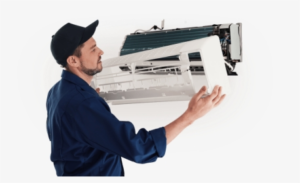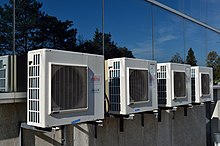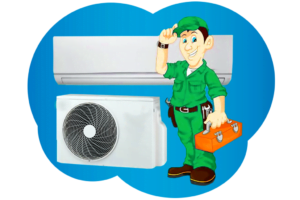air conditioner
Split ac
Any queries please contact 7770074243
Air conditioner, Split ac .often abbreviated as A/C (US), AC (US), or air con (UK),is the process of removing heat from an enclosed space to achieve a more comfortable interior environment (sometimes referred to as “comfort cooling”) and air conditioner in some cases also strictly controlling the humidity of internal air.
Air conditioner can be achieved using a mechanical ‘air conditioner’ or alternatively a variety of other methods, including passive cooling or ventilative cooling. Air conditioning is a member of a family of systems and techniques that provide heating, ventilation, and air conditioning (HVAC). Air conditioner Heat pumps are similar in many ways to air conditioners, but use a reversing valve to allow them to heat and also cool an enclosed space. Split ac
in, which typically use vapor-compression refrigeration, range in size from small units used within vehicles or single rooms to massive units that can cool large buildings. Air source heat pumps, which can be used for heating as well as cooling, are becoming increasingly common in cooler climates. Split ac
air conditioner
According to the International Energy Agency (IEA), as of 2018, 1.6 billion air conditioning units were installed, which accounted for an estimated 20% of electricity usage in buildings globally with the number expected to grow to 5.6 billion by 2050. The United Nations called for the technology to be made more sustainable to mitigate climate change and for the use of alternatives, like passive cooling, evaporative cooling, selective shading, windcatchers, and better thermal insulation.
CFC and HCFC refrigerants such as R-12 and R-22, respectively, used within air conditioners have caused damage to the ozone layer,and HFC refrigerants such as R-410a and R-404a, which were designed to replace CFCs and HCFCs, are instead exacerbating climate change. Both issues happen due to the venting of refrigerant to the atmosphere, such as during repairs. HFO refrigerants, used in some if not most new equipment, solve both issues with an ozone damage potential (ODP) of zero and a much lower global warming potential (GWP) in the single or double digits vs. the three or four digits of HFCs. Split ac
History
Air conditioning dates back to prehistory. Ancient Egyptian buildings used a wide variety of passive air-conditioning techniques. These became widespread from the Iberian Peninsula through North Africa, the Middle East, and Northern India. Split ac
Passive techniques remained widespread until the 20th century, when they fell out of fashion, replaced by powered air conditioning. Using information from engineering studies of traditional buildings, passive techniques are being revived and modified for 21st-century architectural designs.
we allow the building’s indoor environment to remain relatively constant largely independent of changes in external weather conditions and internal heat loads. They also allow deep plan buildings to be created and have allowed people to live comfortably in hotter parts of the world .Split ac
Heating

Some air conditioning systems have the option to reverse the refrigeration cycle and act as air source heat pump, therefore producing heating instead of cooling in the indoor environment. They are also commonly referred to as “reverse cycle air conditioners”. The heat pump is significantly more energy-efficient than electric resistance heating, because it moves energy from air or groundwater to the heated space, as well as the heat from purchased electrical energy.
When the heat pump is in heating mode, the indoor evaporator coil switches roles and becomes the condenser coil, producing heat. The outdoor condenser unit also switches roles to serve as the evaporator and discharges cold air (colder than the ambient outdoor air).
air conditioner
Most air source heat pumps become less efficient in outdoor temperatures lower than 4°C or 40°F;this is partly because ice forms on the outdoor unit’s heat exchanger coil, which blocks air flow over the coil. To compensate for this, the heat pump system must temporarily switch back into the regular air conditioning mode to switch the outdoor evaporator coil back to being the condenser coil, so that it can heat up and defrost.
Some heat pump systems will therefore have a form of electric resistance heating in the indoor air path that is activated only in this mode in order to compensate for the temporary indoor air cooling, which would otherwise be uncomfortable in the winter.
air conditioner:- repair
Newer models have improved cold-weather performance, with efficient heating capacity down to −14 °F (−26 °C). However there is always a chance that the humidity that condenses on the heat exchanger of the outdoor unit could freeze, even in models that have improved cold-weather performance, requiring a defrosting cycle to be performed.
The icing problem becomes much more severe with lower outdoor temperatures, so heat pumps are sometimes installed in tandem with a more conventional form of heating, such as an electrical heater, a natural gas, heating oil, or wood-burning fireplace or central heating, which is used instead of or in addition to the heat pump during harsher winter temperatures. In this case, the heat pump is used efficiently during milder temperatures, and the system is switched to the conventional heat source when the outdoor temperature is lower. air conditioner-ledihatv.com 


